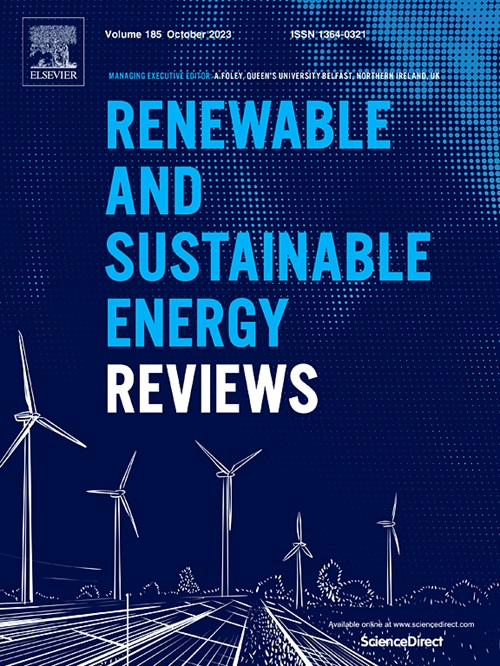Upcycling anaerobic digestion streams into feed-grade protein for increased environmental sustainability
IF 16.3
1区 工程技术
Q1 ENERGY & FUELS
引用次数: 0
Abstract
Biogas plants have long been recognized as well-established systems for converting waste into energy and organic fertilizers. However, biogas plants are expected to go beyond their primary functions to enhance the sustainability gains from the circular bioeconomy. Carbon (CO2 and CH4) and nitrogen streams from anaerobic digestion (AD) facilities can be converted into higher-value products, such as microbial proteins (MPs). While two dominant pathways are known for MP production from AD streams, namely methane-oxidizing bacteria (MOB) and hydrogen-oxidizing bacteria (HOB), there is a lack of comprehensive research comparing these two pathways from an environmental sustainability viewpoint. Furthermore, the extent to which the environmental sustainability of MP production platforms depends on feedstock characteristics is yet to be scrutinized. To address the above-mentioned research questions, four biogas plants treating different types of biowaste were selected as case studies. Specifically, the effects of the C/N ratio in the input streams, biogas upgrading technologies (water scrubbing and biological biogas upgrading), and microbial platforms (HOB and MOB) were investigated. Environmental impacts were assessed using consequential life cycle assessment (CLCA), with Denmark as the spatial boundary and 2030 as the temporal boundary. Across all scenarios, the MOB pathway demonstrated superior environmental performance compared with the other pathways. Furthermore, the composition of the feedstock and quantity of biogas play key roles in the total environmental gains. Finally, the sources of uncertainty and opportunities for future improvements are identified to pave the way for land-independent feed-grade protein production using locally available biowastes.

求助全文
约1分钟内获得全文
求助全文
来源期刊

Renewable and Sustainable Energy Reviews
工程技术-能源与燃料
CiteScore
31.20
自引率
5.70%
发文量
1055
审稿时长
62 days
期刊介绍:
The mission of Renewable and Sustainable Energy Reviews is to disseminate the most compelling and pertinent critical insights in renewable and sustainable energy, fostering collaboration among the research community, private sector, and policy and decision makers. The journal aims to exchange challenges, solutions, innovative concepts, and technologies, contributing to sustainable development, the transition to a low-carbon future, and the attainment of emissions targets outlined by the United Nations Framework Convention on Climate Change.
Renewable and Sustainable Energy Reviews publishes a diverse range of content, including review papers, original research, case studies, and analyses of new technologies, all featuring a substantial review component such as critique, comparison, or analysis. Introducing a distinctive paper type, Expert Insights, the journal presents commissioned mini-reviews authored by field leaders, addressing topics of significant interest. Case studies undergo consideration only if they showcase the work's applicability to other regions or contribute valuable insights to the broader field of renewable and sustainable energy. Notably, a bibliographic or literature review lacking critical analysis is deemed unsuitable for publication.
 求助内容:
求助内容: 应助结果提醒方式:
应助结果提醒方式:


